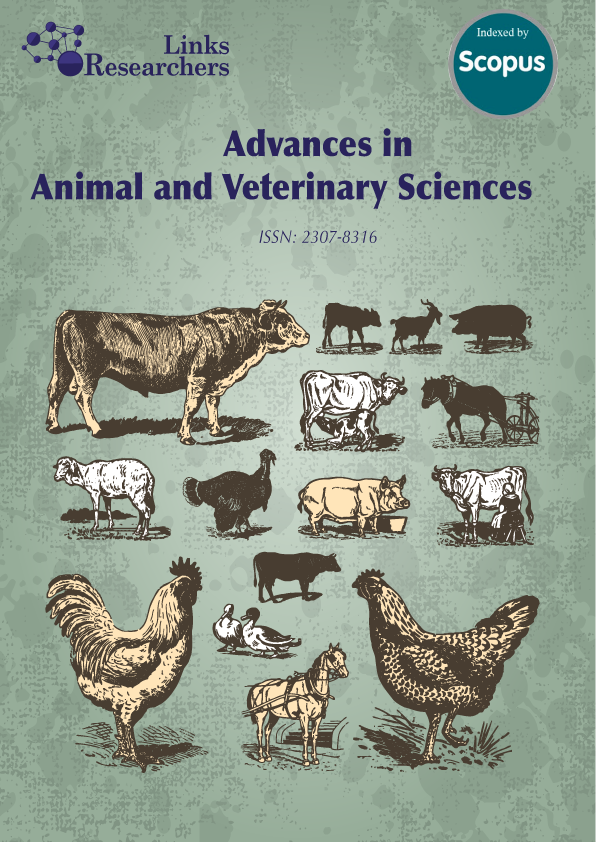Advances in Animal and Veterinary Sciences

Featuring
-
Impact of the COVID-19 Pandemic and Development Strategies on Broiler Farming in Indonesia: A Review
Supardi Rusdiana, Tatan Kostaman, Priyono Priyono, Diana Andrianita Kusumaningrum, Lisa Praharani, Yeni Widiawati, Agustin Herliatika, Nurul Pratiwi, Nurul Azizah, Paul Ade Iji
Adv. Anim. Vet. Sci., Vol. 12, Iss. 9, pp. 1646-1653
-
The Effect of NaCl, KCl, CaCl2 and Coriander on the Characteristics of Salted Chicken Eggs
Dian Septinova, Isnaini Nurfianti, Denita Eptiana, Khaira Nova, Riyanti
Adv. Anim. Vet. Sci., Vol. 12, Iss. 9, pp. 1640-1645
-
Performance of Broiler Chickens in Open House Cages with Additional Probiotic Nutrition
Rico Anggriawan, Widya Paramita Lokapirnasari, Sri Hidanah, Muhammad Anam Al-Arif, Diyah Ayu Candra
Adv. Anim. Vet. Sci., Vol. 12, Iss. 9, pp. 1630-1639
-
Efficacy of Vaginal Electrical Resistance Measurement in West African Dwarf Goats Synchronized using Ovsynch and Double PG Protocol
Olagbaju Olawole, Ayoola Mathew, Lawal Tunde, Olorunleke Solomon, Oladejo Opeyemi, Oguntunji Abel, Alabi Olufemi, Aderemi Foluke, Ajayi Abimbola
Adv. Anim. Vet. Sci., Vol. 12, Iss. 9, pp. 1622-1629
Subscribe Today
Receive free updates on new articles, opportunities and benefits

© 2024 ResearchersLinks. All rights Reserved. ResearchersLinks is a member of CrossRef, CrossMark, iThenticate.



